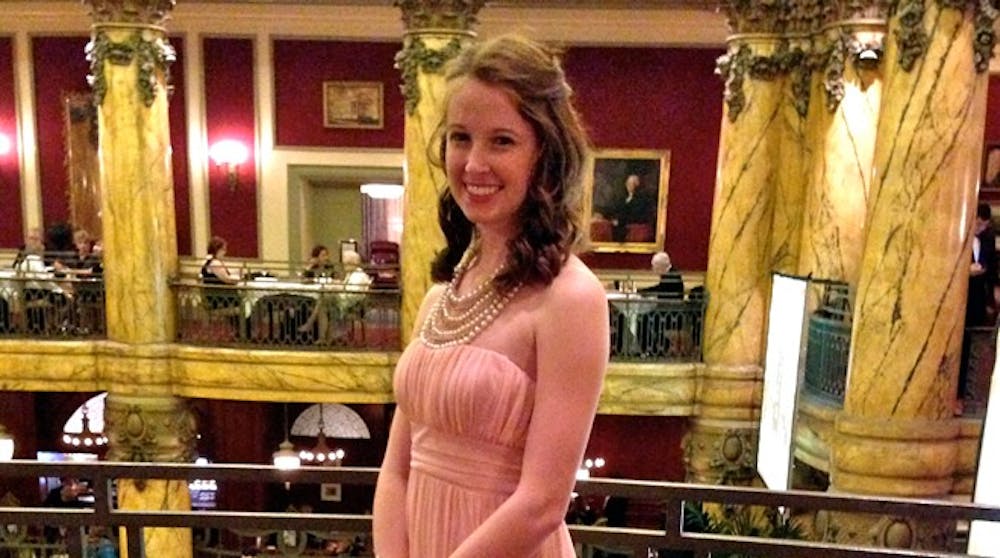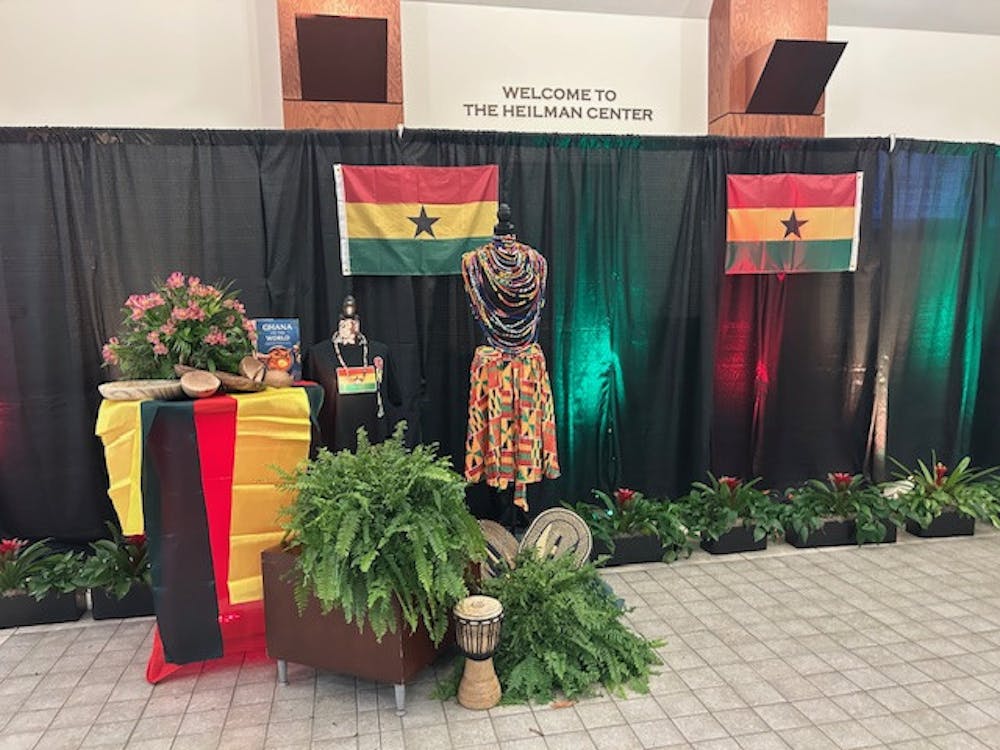Many junior Westhampton women, donned in long, white dresses, are escorted down the steep staircase of the Jefferson Hotel each February to receive their class rings.
But, this is one of the last years women will wear white dresses to Ring Dance. The Westhampton Class of 2016 will be wearing black because of changes made last year.
The importance of Ring Dance to each woman varies from wanting to spend time with family members to embracing the academic achievement to spending time with peers in a formal setting.
For some women, a more important aspect of Ring Dance is feeling distinctive and true to oneself. For junior Samantha Lint, wearing a white dress had too many racial and gender associations, she said.
The connotations of wearing a white dress and having your father walking you down the stairs were evocative of a debutante ball or wedding, Lint said.
"I just felt uncomfortable and not very true to myself doing that," Lint said. "I felt more authentic wearing a dress that I liked."
The point of wearing a different colored dress was not to be obnoxious, Lint said.
When Lint was shopping for her Ring Dance dress, she didn't have a color in mind, as long as it wasn't white, she said. She finally decided on wearing a dress that was pale pink, she said.
Lint said that in her conversation with gender studies professors, she was told that defaulting to white dresses and bringing escorts did not happen until the 1980s.
Lint brought her mentor, Peggy, to Ring Dance. Peggy graduated in the Westhampton class of 1958. Peggy told her that when she had gone through Ring Dance, there were no white dresses, no escorts, no families and the event was more ceremonial, Lint said.
The student body has defaulted to wearing white dresses, even though it is not a requirement, associate dean Kerry Fankhauser said.
Class unity and a sense of belonging were also important to Lint, she said.
Enjoy what you're reading?
Signup for our newsletter
"I shouldn't have to miss something that my whole class is doing just because I am uncomfortable with some aspect of it," Lint said.
Lint said she had had anxiety about wearing a pale pink dress and had second-guessed her decision during the week leading to Ring Dance for fear of harassment. It would have been easier to just wear a white dress and not stay true to her values, but her worry turned out to be unnecessary, she said.
Many people approached Lint in support, commenting that she looked nice, she was brave and that they had wished they had done something different, she said.
Although she appreciated all of the compliments, she said it had been saddening to hear that other students had felt as if they could not do something different.
The deans enjoy seeing women who choose not to wear white dresses because things are not the same as they were 30 or 40 years ago, Fankhauser said. She said that the deans wanted the women to feel comfortable enough to express themselves.
Junior Emily St. John also did not wear a long white dress, but wanted to feel unified with her class. Her decision to wear a short dress was not a statement of rebellion or an attempt to stand out, but a way of having fun with her options, she said.
"My dress was mainly white," St. John said, "so I still looked and felt like part of the junior class, but the short length and pink flair gave it elements that appealed to my personal style."
St. John's boyfriend and father coordinated their ties with the pink in her dress, and she said the attire had been something that they were able to do together.
Jessica Zwennes, an international student from Ghana, wore a long white dress, with a top that was made of "kente," an interwoven fabric that is designed based on where one is from within the country. Kente is worn at the coming of age ceremonies in Ghana, and Zwennes said she thought that Ring Dance was similar.
Wearing the colorful print on her dress was a way for Zwennes to incorporate traditions from home, bring part of her culture to Ring Dance and feel connected to a ceremony that was not familiar in Ghana, she said.
Many other international students do not feel included in the family aspect of Ring Dance, so she encouraged those from outside America to be a part of Ring Dance and walk down the stairs, Zwennes said.
"There are tons of things that are traditional that shouldn't stay," Lint said.
Contact staff writer Marie Jayme at marie.jayme@richmond.edu
Support independent student media
You can make a tax-deductible donation by clicking the button below, which takes you to our secure PayPal account. The page is set up to receive contributions in whatever amount you designate. We look forward to using the money we raise to further our mission of providing honest and accurate information to students, faculty, staff, alumni and others in the general public.
Donate Now



